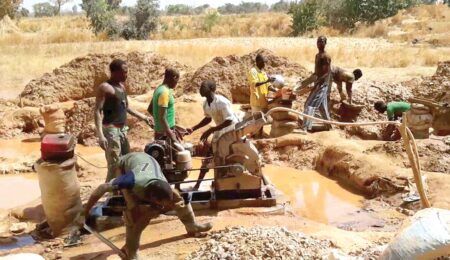South Africa’s long-anticipated mining cadastre system is scheduled to launch in June, beginning with a pilot run in the Western Cape before expanding to other provinces. This announcement was made during the Junior Mining Indaba held in Johannesburg on Tuesday.
Tseliso Maqubela, Deputy Director-General at the Department of Mineral and Petroleum Resources (DMPR), confirmed that the department is “on track to deliver a transparent cadastral system.” The June launch date, long anticipated by stakeholders, was publicly reaffirmed at the event, reflecting its strategic importance.
A mining cadastre is an online platform designed to display a country’s mineral assets and streamline the application process for mining and prospecting rights. The absence of such a system in South Africa has historically deterred investment, with regional offices plagued by application backlogs and allegations of corruption.
According to Maqubela, the Western Cape was chosen for the initial rollout because it is a relatively straightforward mining region. Although more famous for wine and rooibos, it surprisingly hosts the highest number of active mines in the country, mostly small-scale operations such as sand mining. It also has a minimal backlog of pending applications, making it ideal for a controlled pilot phase.
The discredited Samrad system, currently used for mining applications, will be decommissioned in the Western Cape on 1 July, with the new cadastre taking over. Following this, the system will be rolled out in the Eastern Cape and the Free State, eventually replacing Samrad nationwide. The department sees this transition as a major step toward transparency, potentially exposing inefficiencies and misconduct.
Maqubela acknowledged challenges in some regions, notably Mpumalanga, which has the most severe backlog and receives around 110 mining permit applications monthly—a figure that has raised suspicions. There have been reports of double applications for the same land and questionable practices such as applying for adjacent permits to exceed the legal five-hectare limit for mining permits. The new system is expected to automatically reject such dubious applications.

A preview video of the platform was shown at the event, showing a streamlined process beginning with the selection of the application type. However, critics remain cautious. Paul Miller, Director at consultancy AmaranthCX, remarked that while the new system appears more efficient, it still lacks full public visibility regarding existing permits, limiting transparency.
The PMG consortium, led by Pacific GeoTech Systems—a Canadian firm with extensive experience in digital resource systems—was awarded the contract to develop the cadastre.
This initiative is seen as crucial for revitalising South Africa’s dwindling share in global exploration investment, which has plunged from 5% to under 1% over the past two decades. Given the long lead times required to establish new mines, improving exploration processes is considered vital.
However, industry leaders have raised concerns that new Black Economic Empowerment (BEE) requirements in the draft Mineral Resources Development Bill could hamper these efforts. Exploration companies, previously exempt from such regulations, are now included under the proposed changes.
“We’ve repeatedly highlighted the need to exclude prospecting companies from empowerment requirements,” said Mzila Mthenjane, CEO of the Minerals Council. “Exploration is the riskiest and most capital-intensive stage of the mining process. Every rand must go into drilling and data analysis. These additional obligations are burdensome.”
Mthenjane also criticised the draft bill for disregarding the council’s recommendations. “While we did engage with the department, it’s not clear how our input has been reflected in the bill,” he said.





Leave a Reply